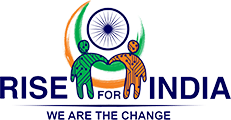In his address at the council, Prime Minister Narendra Modi rightly said that one does not have to be comfortable about everything. Even between a husband and wife 100 percent comfort is not possible; yet there exists a long term binding between the two. However, many things unite India and the United States of America, the greatest factor being DEMOCRACY!
Two progressive Indian Governments have sought after a strategic partnership with the United States that would have been unfathomable at the time of the Cold War and nonalignment. This turnaround in relations ended in 2008, when the two nations signed a civil nuclear agreement. The future extent of the US-Indian relationship will depend, then, on decisions made in both Washington and New Delhi. The United States looks at India to manage its financial and social changes, and India looks at the United States to regard Indian security concerns. Furthermore, the nations will need to precisely oversee approaching differences between them, including the ones on Afghanistan, Pakistan and China.
The United States and India can build a more enduring, strategic, and global partnership by keeping certain significant things in mind. First and foremost, India needs to support its rise as a noteworthy force. The United States needs to be touchy to Indian concerns in various ranges that straightforwardly influences the way Indians engage. Contrasting approaches in the middle of Washington and New Delhi with respect to America’s arrangement towards Afghanistan and Pakistan, China, environmental change, and different issues should be taken care off. Overseeing such debates by coming to conclusions or possibly by moderating the impacts of the differences will be essential to viable collaboration. Pretty much as the changes in India in the 1990’s made way for the late change of US-Indian relations. Indian strategy decisions in the impending years will shape both the nation’s ascents.
The weightiest element of all may be whether India becomes monetarily strong and incorporates further deals with world’s other real economies, or not. Unless it does, India looks like having an unrealistic approach to apply unequivocal impact on universal financial matters or legislative issues. To encourage the sort of development it looks for, India is likewise to enhance its physical base. Additionally, the legislature is attempting to bring together parts of the security framework, advance coordination, extend faculty, and help plans, yet the circumstance is enhancing just gradually.
Despite the fact that these security dangers could extraordinarily influence India’s destiny, its financial and social decisions will be of utmost importance. What’s more, decisions about financial matters, base, and human capital, thus, will focus on India’s ability to create a worldwide impact and hence the potential extent of US-Indian collaboration.
The United States and India offer imperative investments: both look to restore worldwide development, ensure the worldwide center, upgrade worldwide vitality security, and guarantee an offset of force in Asia. They should in this way expand the degree, quality, and power of their participation at each level.
The biggest test of their relationship will be if Washington and New Delhi can transform their common interests into complementary policies around the world, and finally move towards achieving “VASUDHAIVA KUTUMBAKAM”!

